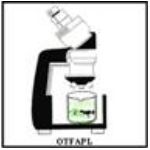AGLS 6502 Lecture 20.5 - The Javelina or Quenk:
Health Maintainance and Diseases
20.5 Health Maintainance and Diseases of the Quenk
An account is made of the report by Sowls (1984) on some of the diseases and parasites that affect the collared peccary in Arizona and Texas.
The collared peccary has been found to have a variety of parasites in all parts of its range. Some external parasites include the sucking louse (Pecaroesus javalii), ticks, chiggers, biting lice and fleas. Internal parasites include nematodes, flukes, tapeworms and protozoa.
In his account of diseases and infections of wild peccaries, Sowls (1984) indicated some level of difficulty in recognizing such instances due to low levels of death and loss of carcasses through decomposition or scavenging. Some diseases observed among captive animals include the following:
- Respiratory Diseases - occur with the changes in weather and the coming of winter in the northern fringe of the range.
- Digestive Tract Disorders - severe diahorrea was observed. The causative organism Salmonella muenchen was isolated and identified. Escheria coli was also isolated and identified, and though not pathogenic or only slightly so, it may cause diahorrea in young animals.
- Kidney haemorrhaging - was noted in captive animals and found to be result of oxalic acid poisoning.
- Eye conditions - two (2) types were noted among wild and captive peccaries:
- (i) a white exudate which turned to crusts under the eyes of isolated animals or among captive old adults. This condition was found to be repairable when individuals were moved into communal pens where constant rubbing of the jowls and face over each others scent glands quickly rubbed off the crusty material;
- (ii) a permanent blindness caused by an acute eye infection. This condition was characterized by sudden inflammation of the eye and massive drainage which, if not arrested by antibiotics, resulted in blindness.
- Skin Disease - not common. Some animals did show parakeratosis with heavy crusting and dry-cracking horny material on the head and body.
Because peccaries have been associated with true pigs, studies inferring the peccary as a source of infection for the pig have been conducted. These diseases include:
- African Swine Fever - the collared peccary was found to be resistant to the virus of African swine fever.
- Hog Cholera - the collared peccary has been shown to be susceptible to the virus for hog cholera.
- Vesicular Exanthema of Swine Virus - two (2) strains of this virus have been tested on the collared peccary. The animal was found to be susceptible to the virus.
- Vesicular Stomatitis - a highly infectious viral disease that affects horses, cattle and pigs. The collared peccary was less susceptible than domestic hogs.
- Rinderpest - an Old World disease which has caused destruction of both wild and domestic ungulates. The peccary has been found to be susceptible to the disease.
- Foot and Mouth Disease - the virus affects a wide variety of cloven-hoofed animals. Collared peccaries were found to be susceptible, but not as severely affected as domestic swine.
Helpful Links, Photos, Videos and Multimedia
